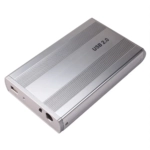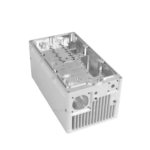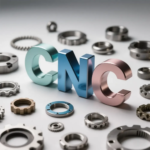Unlock the Power of Coordinate Measurement Machines: Exploring the World of Scanning Methods
In the realm of Coordinate Measurement Machines (CMMs), scanning is a crucial operation that enables the collection of data points across the surface of a part to be measured. In this article, we’ll delve into the world of scanning methods, exploring the intricacies of contact, non-contact, and hybrid techniques in three-coordinate measuring systems (3CMS). Our focus will be on the PC-DMI program, a software used to control and operate coordinate measuring machines.
Understanding Scanning Methods in 3CMS
In 3CMS, scanning methods can be broadly categorized into three primary types: contact, non-contact, and hybrid. Each method has its unique characteristics, advantages, and limitations, making them suitable for various applications and part geometries.
Contact Scanning Methods
Contact scanning methods involve physical contact between the measuring device and the surface of the part. These methods include:
- Open Linear Scanning: This is the most basic scanning method, where the operator manually moves the measuring device along a linear path to collect data points. In PC-DMI, this method requires entering the nominal size of the boundaries, step size, and reviewing the SET steering vector.
- Linear Scanning with CAD Model: In this method, the operator uses the CAD model to define the starting point of the scan, which is then used as a reference for data collection.
Non-Contact Scanning Methods
Non-contact scanning methods, on the other hand, rely on optical or laser technology to non-invasively collect data points. These methods include:
- Optical Scanning: This method uses cameras or other optical sensors to capture images or wavelengths, which are then used to create a digital representation of the part.
Hybrid Scanning Methods
Hybrid scanning methods combine elements of contact and non-contact scanning, offering a unique blend of advantages. These methods include:
- Probe Scanning: This method uses a combination of contact and non-contact technologies, where the probe touches the part to collect data points, and then uses optical or laser technology to refine the measurement.
Mastering the Art of Scanning in PC-DMI
To fully leverage the capabilities of PC-DMI, users must understand the intricacies of each scanning method and how to effectively operate the coordinate measuring machine. By mastering this knowledge, operators can optimize measurement accuracy, efficiency, and part verification.
In-Depth Analysis of Open Linear Scanning
In open linear scanning, the operator manually moves the measuring device along a linear path to collect data points. This method is suitable for simple, flat surfaces or tracks with minimal curvature. To start the scan in PC-DMI, users enter the nominal size of the boundaries, then select the step size, and finally review the SET steering vector. By performing these steps, users can ensure accurate data collection and minimize measurement errors.
Innovative Applications of Scanning in 3CMS
The applications of scanning in 3CMS are vast and diverse, extending beyond traditional manufacturing and quality control. From complex medical device development to high-precision aerospace components, scanning plays a critical role in ensuring accurate measurement, inspection, and quality control. By understanding the various scanning methods available in 3CMS, operators can optimize measurement processes, reduce errors, and increase product quality.
Conclusion
In this article, we’ve explored the world of scanning methods in 3CMS, highlighting the benefits and limitations of contact, non-contact, and hybrid techniques. By understanding the intricacies of open linear scanning, users can leverage the capabilities of PC-DMI to collect high-quality data points and ensure accurate measurement. Whether in manufacturing, quality control, or research and development, scanning plays a vital role in maintaining the highest standards of measurement accuracy and precision. As the demand for high-precision measurement continues to grow, it’s essential to stay ahead of the curve by mastering the art of scanning in 3CMS.
Future Directions
As the world of 3CMS continues to evolve, so too will the scanning methods and techniques used. New technologies, such as machine learning and artificial intelligence, will further enhance the accuracy and speed of scanning processes. Additionally, the integration of IoT and cloud computing will enable real-time data analysis and remote monitoring, revolutionizing the way we approach measurement and quality control. Stay tuned for exciting breakthroughs and innovations in the world of 3CMS scanning methods.
Call to Action
If you’re interested in learning more about the revolutionary world of 3CMS and scanning methods, we invite you to explore our comprehensive knowledge base, packed with in-depth guides, tutorials, and best practices. Join our community of experts and stay ahead of the curve in the rapidly evolving field of Coordinate Measurement Machines.










